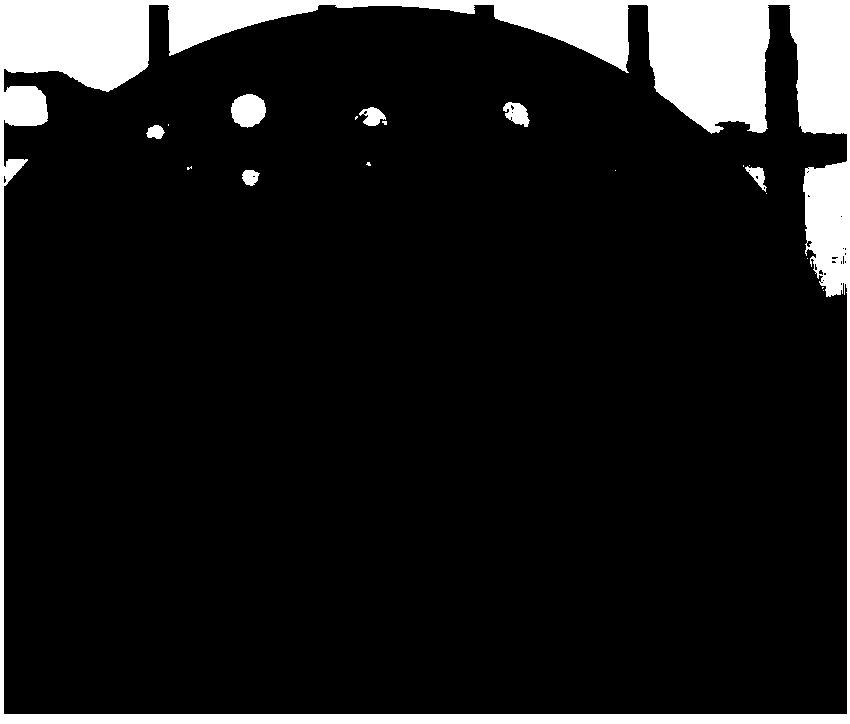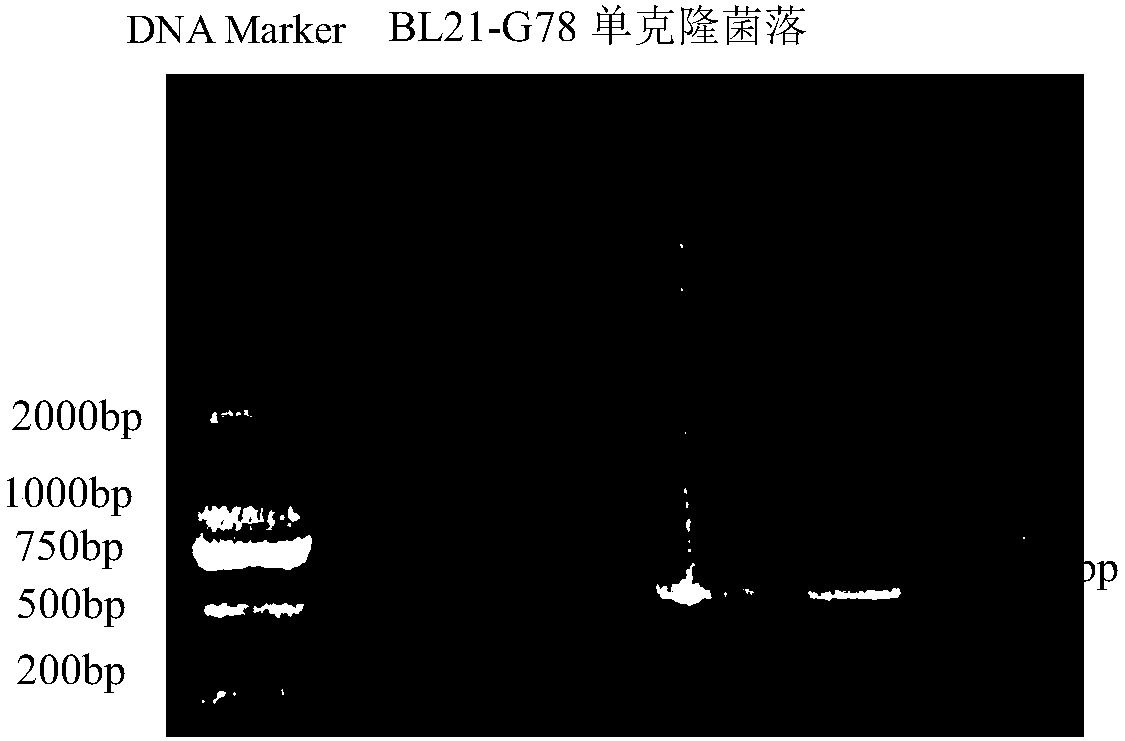Pseudomonas aeruginosa bacteriophage endolysins, and coding gene and application thereof
A technology of Pseudomonas aeruginosa and bacteriophage, applied in application, genetic engineering, plant genetic improvement and other directions, can solve the problems of no endolysin resistance, no neutralization of antibodies, etc., to improve bactericidal activity, high activity, inhibiting Broad spectrum effect
- Summary
- Abstract
- Description
- Claims
- Application Information
AI Technical Summary
Problems solved by technology
Method used
Image
Examples
Embodiment 1
[0059] Example 1: Isolation and identification of phage
[0060] 1. Isolation of phage
[0061] Take 1L of sewage before hospital treatment, add CaCl 2 Centrifuge at 5000rpm for 10min at 4°C to 1mmol / L, remove the precipitated particles in the sewage, take the supernatant and filter it with a 0.22μm filter membrane to sterilize; take 20mL of the filtrate and mix it with 20mL 2×LB medium, and use 1% inoculum , inoculate 400 μL of Pseudomonas aeruginosa in the logarithmic growth phase, and enrich and culture at 37° C. for 12 hours. Take 5ml of the above-mentioned bacterial solution and centrifuge at 5000rpm for 10min at 4°C, and filter the supernatant through a 0.22μm filter membrane to obtain the phage stock solution. The obtained phage stock solution was serially diluted 10 times (10 -1 -10 -8 ), respectively take 300 μL of the dilution and mix it with Pseudomonas aeruginosa in the logarithmic growth phase at a ratio of 1:1, incubate at 37°C for 15 minutes, mix with 4mL of...
Embodiment 2
[0064] Embodiment 2: Extraction of phage genome
[0065] 1. Concentration of phage particles
[0066] The overnight culture of Pseudomonas aeruginosa was transferred to 100mL liquid LB medium, the inoculum size was 1%, and the culture was expanded to the logarithmic phase (OD600 about 0.4), and 5mL Pseudomonas aeruginosa phage culture solution was added, 37 The phage lysates were obtained after 4-6 hours of shaking culture at ℃. Add DNase I and RNase A to the lysate to a final concentration of 5 μg / mL, mix well and let stand at 37°C for 1 h. Then add NaCl to a final concentration of 0.1mol / L, mix and dissolve, put in ice bath for 1h, and centrifuge at 12000rpm for 20min. After the supernatant was transferred to another centrifuge tube, PEG8000 was added to a final concentration of 10% (w / v), fully shaken to dissolve, then left at 4°C overnight, centrifuged at 12,000 rpm for 20 min, and the supernatant was discarded. Resuspend the precipitate with 500 μL TM (0.05mol / L Tris-H...
Embodiment 3
[0076] Example 3: Cloning of endolysin gene Lysin-G78, construction of expression vector
[0077] 1. Obtaining the target fragment
[0078] S1 designs a pair of specific primers according to the sequence encoded by the Lysin-G78 (sequence 2) gene, and the primer sequences are as follows:
[0079] Upstream primer: 5'-GC GGATCC ATGATCACCGACAGAGAGTATCAG-3', wherein, the underlined part is the restriction site of BamHI
[0080] Downstream primer: 5'-GC CTCGAG TCAGCCACTAGCTTCAGCATA-3', wherein, the underlined part is the enzyme cleavage site of Xho I
[0081] The reflection system is:
[0082]
[0083] PCR reaction conditions: pre-denaturation at 95°C for 5 min, 30 cycles of amplification (denaturation at 94°C for 30 s, annealing at 56°C for 30 s, extension at 72°C for 1.5 min); extension at 72°C for 10 min, storage at 4°C. PCR amplification products were subjected to 1% agarose gel electrophoresis to observe whether there were specific bands.
[0084] Using the phage ge...
PUM
 Login to View More
Login to View More Abstract
Description
Claims
Application Information
 Login to View More
Login to View More - R&D
- Intellectual Property
- Life Sciences
- Materials
- Tech Scout
- Unparalleled Data Quality
- Higher Quality Content
- 60% Fewer Hallucinations
Browse by: Latest US Patents, China's latest patents, Technical Efficacy Thesaurus, Application Domain, Technology Topic, Popular Technical Reports.
© 2025 PatSnap. All rights reserved.Legal|Privacy policy|Modern Slavery Act Transparency Statement|Sitemap|About US| Contact US: help@patsnap.com



